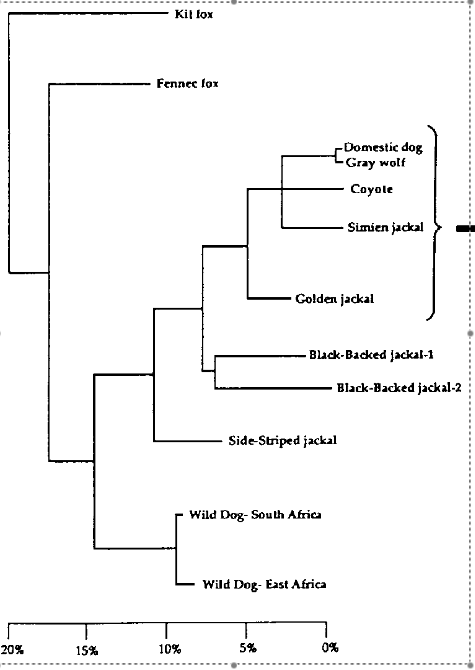No Loners Here: Pack Behavior in African Wild Dogs
Biology 342 Fall 2010
Author: Ella Gray
Phylogeny
The group social system employed by African Wild Dogs evolved among
the large predatory mammals presumably through selection of factors such
as defense of territories or young, communal rearing of young, co-operative
hunting, defending prey against kleptoparasitism (theft of prey) by other predators,
improved efficiency of prey capture, increased prey size, or some combination
of these factors [12].
Of the Canid family, the Afrian Wild dog is the most social, followed by the Gray
wolf [10]. The other members of this family range from solitary to moderately
social--this gradient being present within the species themselves. In addition,
the most recent common ancestor for The African Wild dog and the Gray wolf,
the Fennec fox, has the same moderately social structure as the jackals and the
coyote. From this, we can hypothesize that the similarity in social structure
observed between the Gray wold and the African Wild dog is due to convergent
evolution--probably because of the environmental factors
noted above.
